Mexican Spadefoot Toads - Racing the Sun
An account of visiting temporary Spadefoot Toad tadpoles in the Southwest
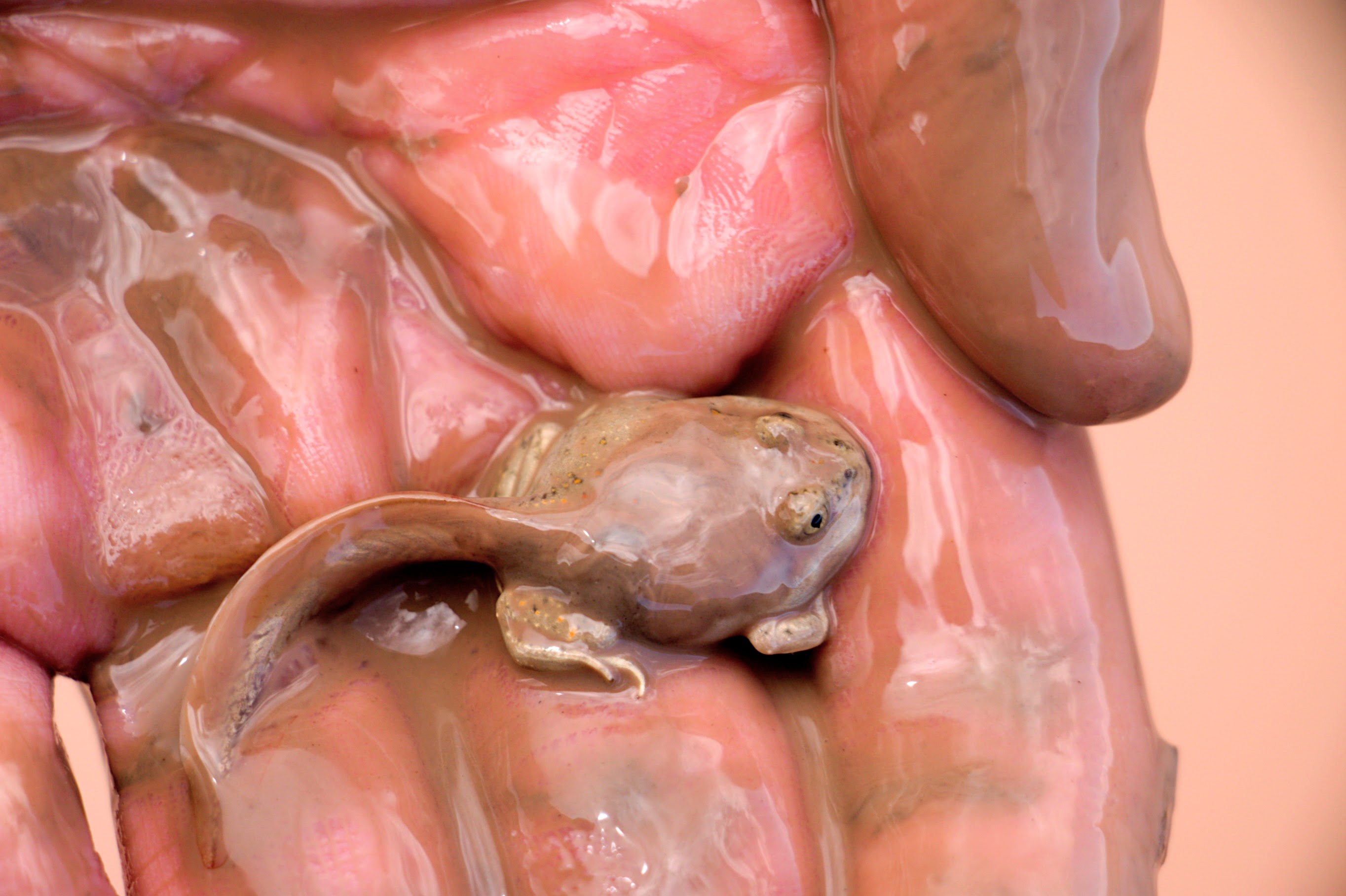 Large Mexican Spadefoot Toad with legs, in the palm of my hand.
Large Mexican Spadefoot Toad with legs, in the palm of my hand.
I’ve written earlier about my visits to a Southeastern Utah Mexican Spadefoot Toad pool. The latest of those visits was August 31, 2021.
I was fascinated by these creatures. I made a series of series of subsequent visits - September 8, September 12, and September 15. I wanted to watch see how the tadpoles progressed, and what it would be like as the pool dried.
Would they win their race with the Sun, and metamorphose before the pool dried?
On my September 8th visit, the pool was noticeably smaller. As I walked up to the pool, I caught a glimpse of what I thought was a multitude of grasshoppers jumping away from my feet.
As I looked more closely, I was surprised to find that it was actually swarms of small Spadefoot Toads. With each step I took, I would spook five or ten toads.
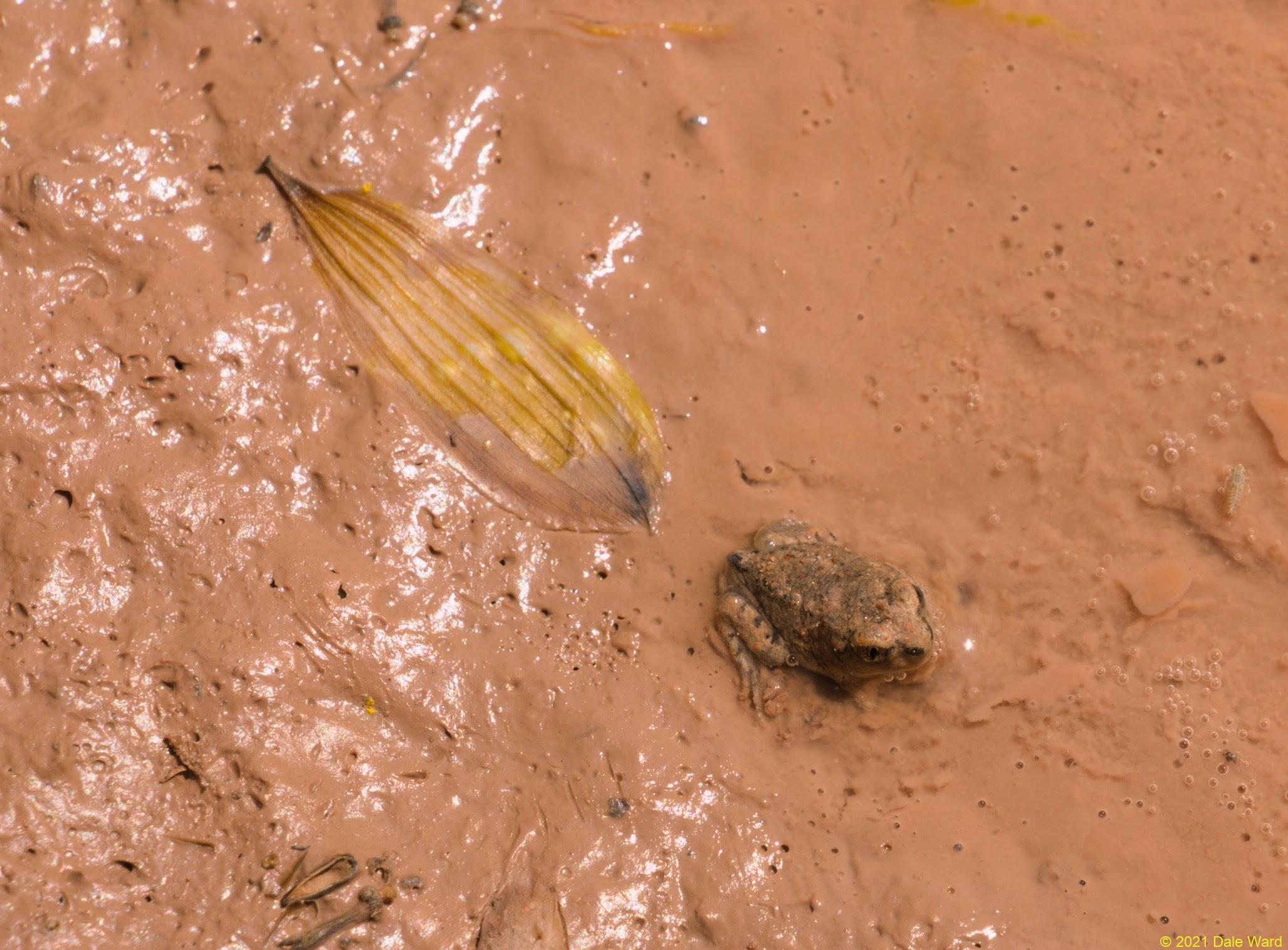 Young Mexican Spadefoot Toad metamorph in the mud next to its pool.
Young Mexican Spadefoot Toad metamorph in the mud next to its pool.
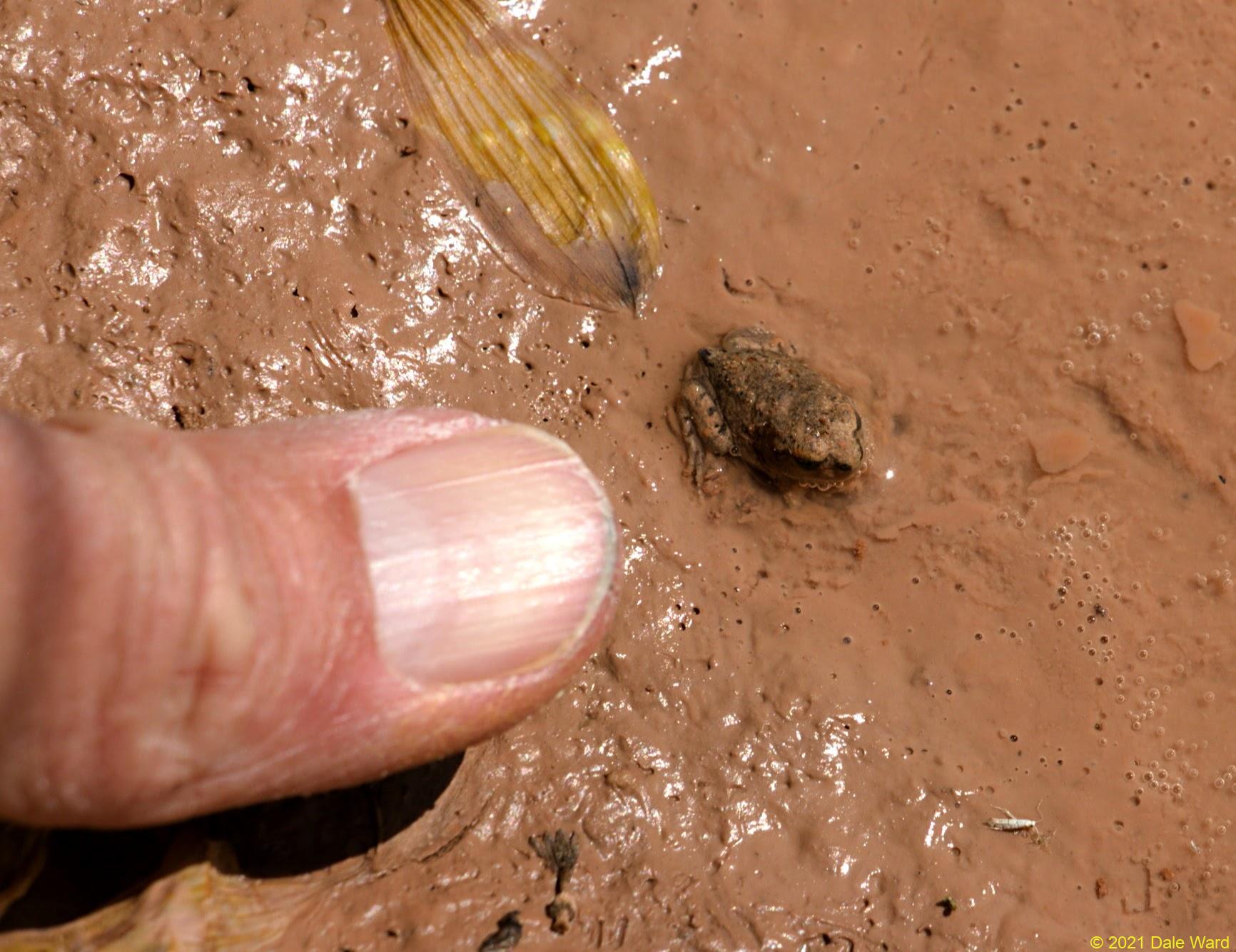 Young Mexican Spadefoot Toad metamorph in the mud next to its pool, with my finger for scale
Young Mexican Spadefoot Toad metamorph in the mud next to its pool, with my finger for scale
The mud around the pool was the consistency of pudding. I couldn’t walk on it without sinking in six or eight inches. The mud seemed to get everywhere - I had difficulty in keeping the mud off my camera.
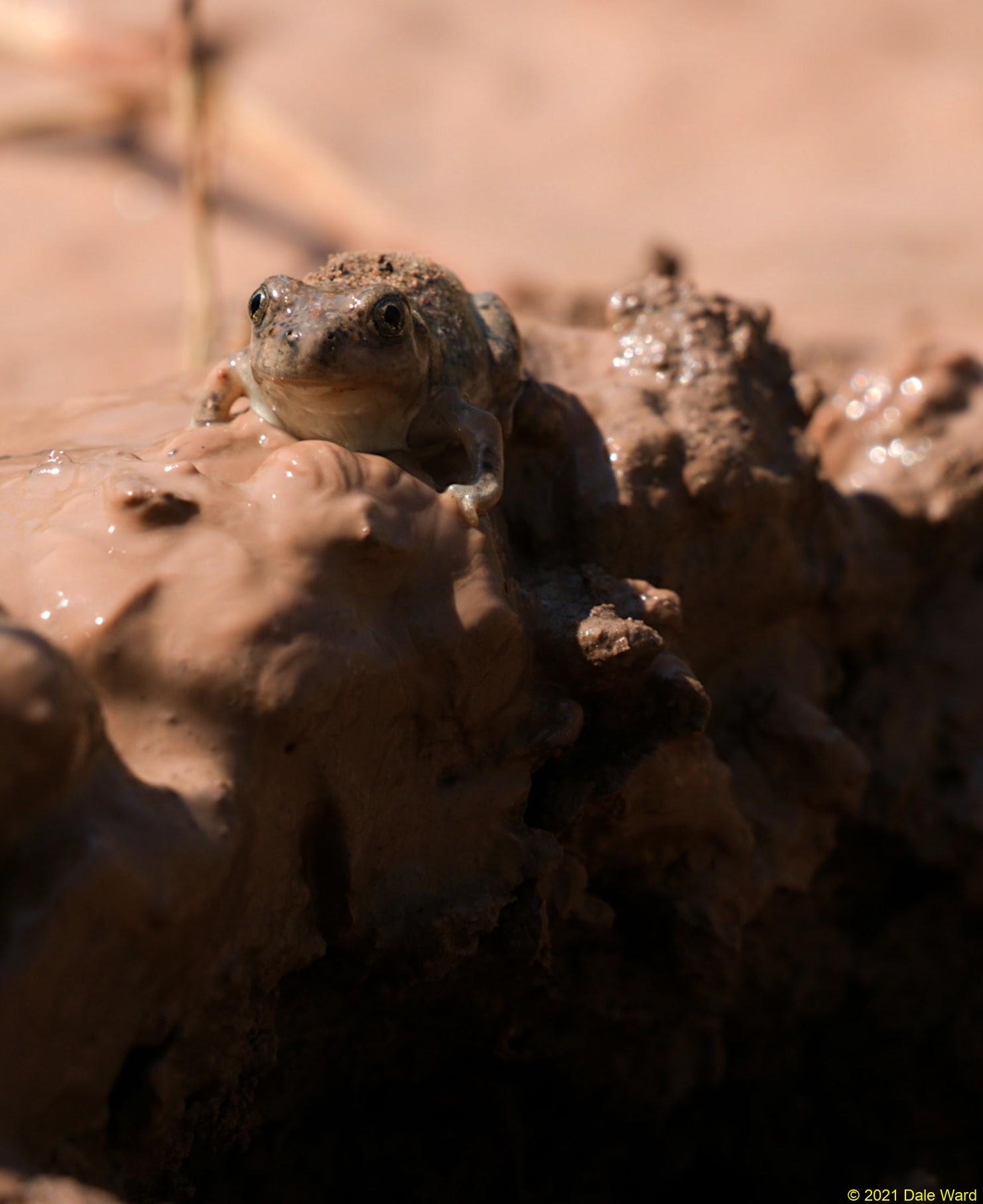 Spadefoot Toad metamorph on the edge of one of my boot prints. It was quite a trick to get photos of the toads without getting the sticky water-mud all over my camera.
Spadefoot Toad metamorph on the edge of one of my boot prints. It was quite a trick to get photos of the toads without getting the sticky water-mud all over my camera.
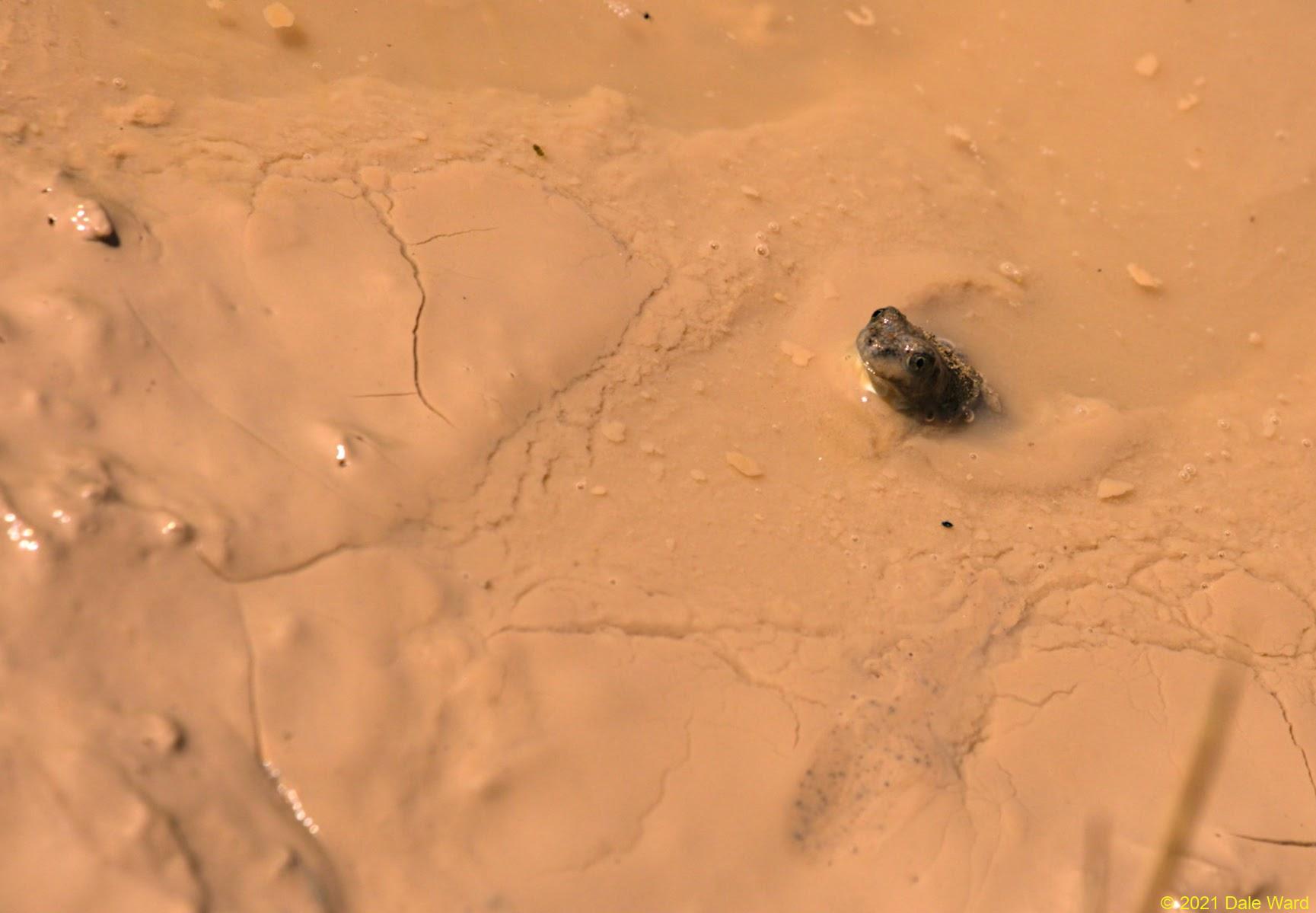 Recent Mexican Spadefoot Toad metamorph peering out of the mud/water interface. The water of the pool is behind him, and the mud of the shore is in front of him. Look how there is almost a “wake” of gelid mud parting in front of him.
Recent Mexican Spadefoot Toad metamorph peering out of the mud/water interface. The water of the pool is behind him, and the mud of the shore is in front of him. Look how there is almost a “wake” of gelid mud parting in front of him.
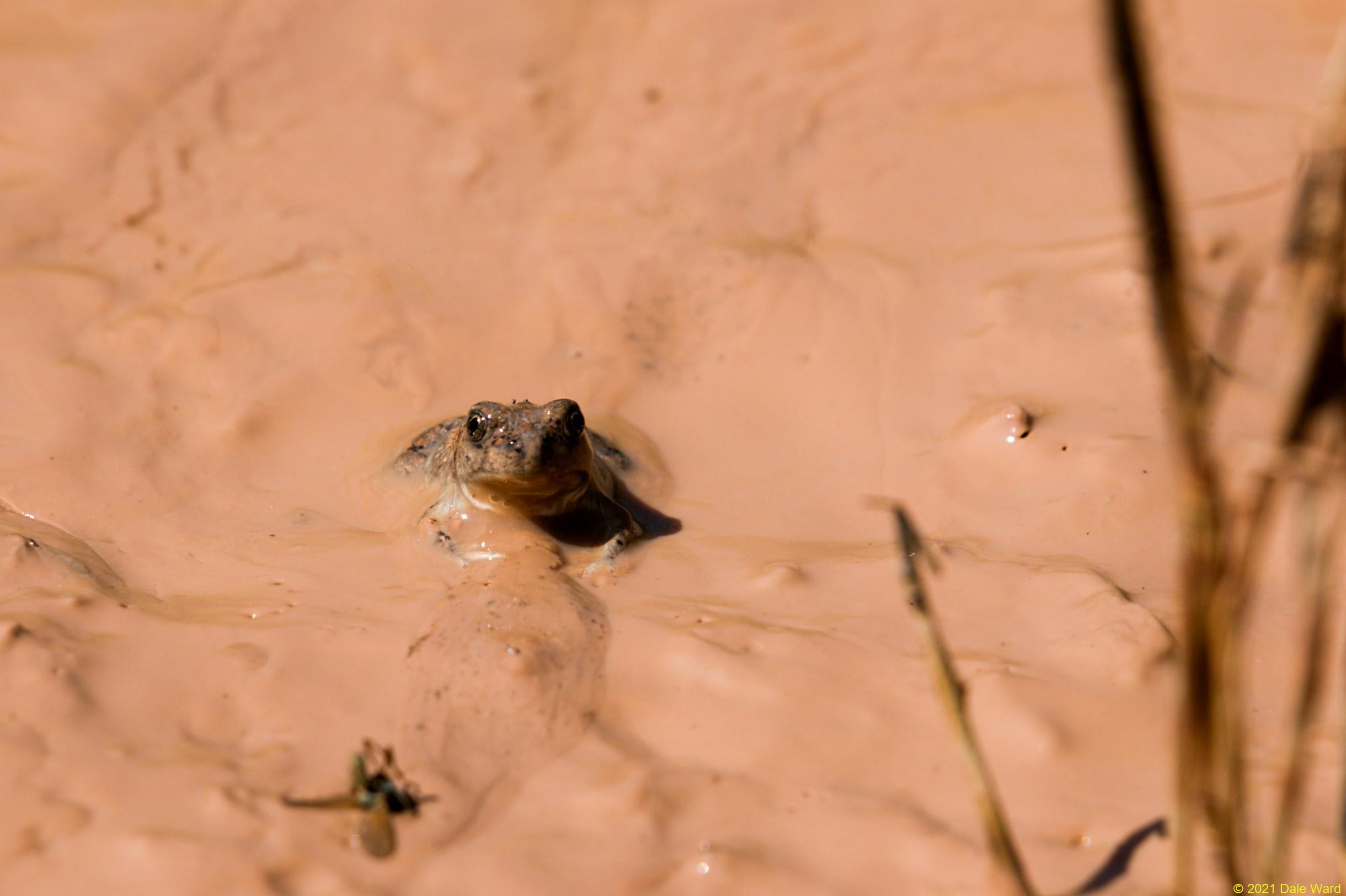 Recent Mexican Spadefoot Toad metamorph. This photo gives a feeling for how liquid the mud is. Or, conversely, how thick and muddy the water is - the toad has sunk partway into it.
Recent Mexican Spadefoot Toad metamorph. This photo gives a feeling for how liquid the mud is. Or, conversely, how thick and muddy the water is - the toad has sunk partway into it.
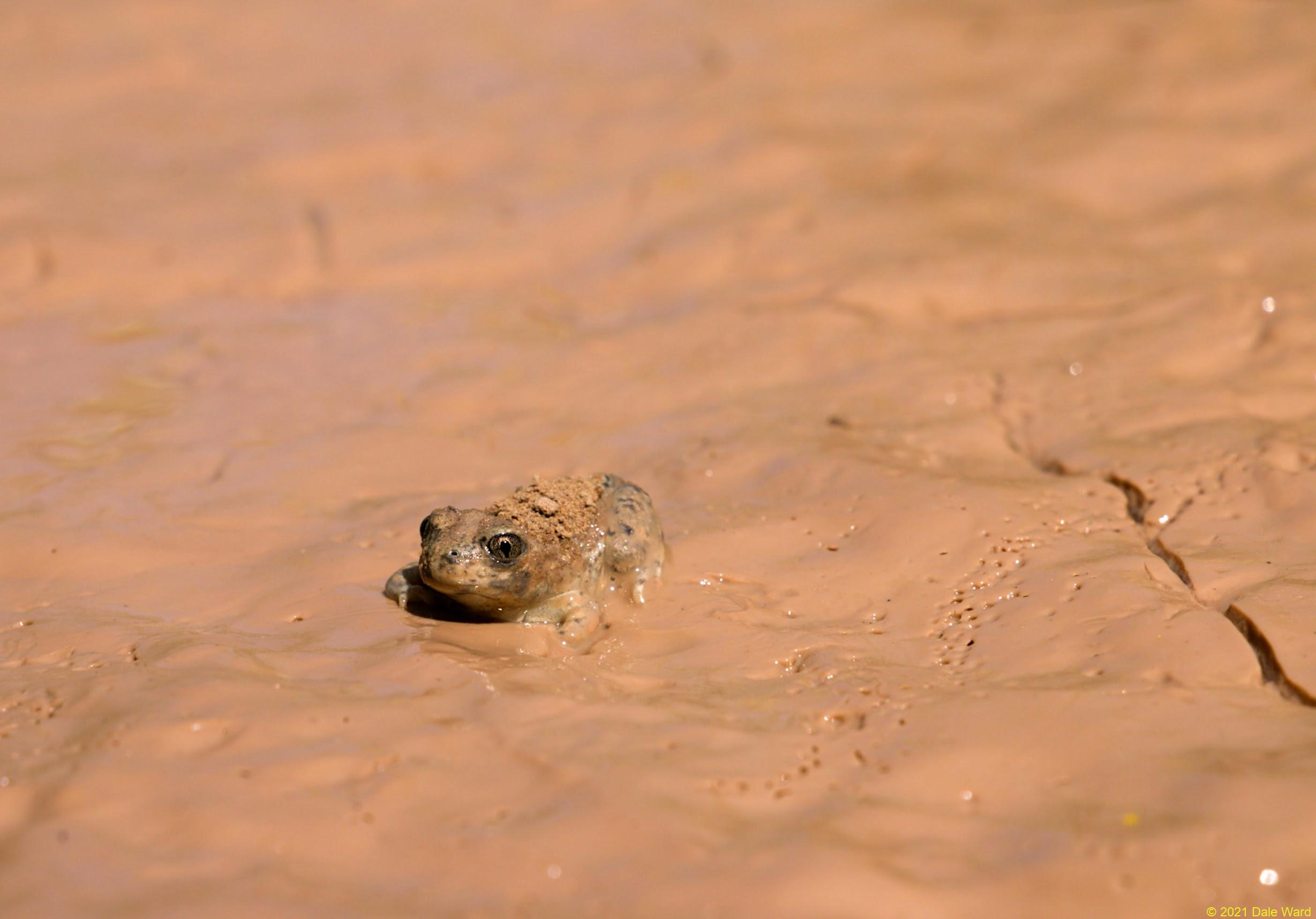 Mexican Spadefoot Toad metamorph in the mud at the pool edge. The row of dots to the Toad’s left side are tracks from another Toad.
Mexican Spadefoot Toad metamorph in the mud at the pool edge. The row of dots to the Toad’s left side are tracks from another Toad.
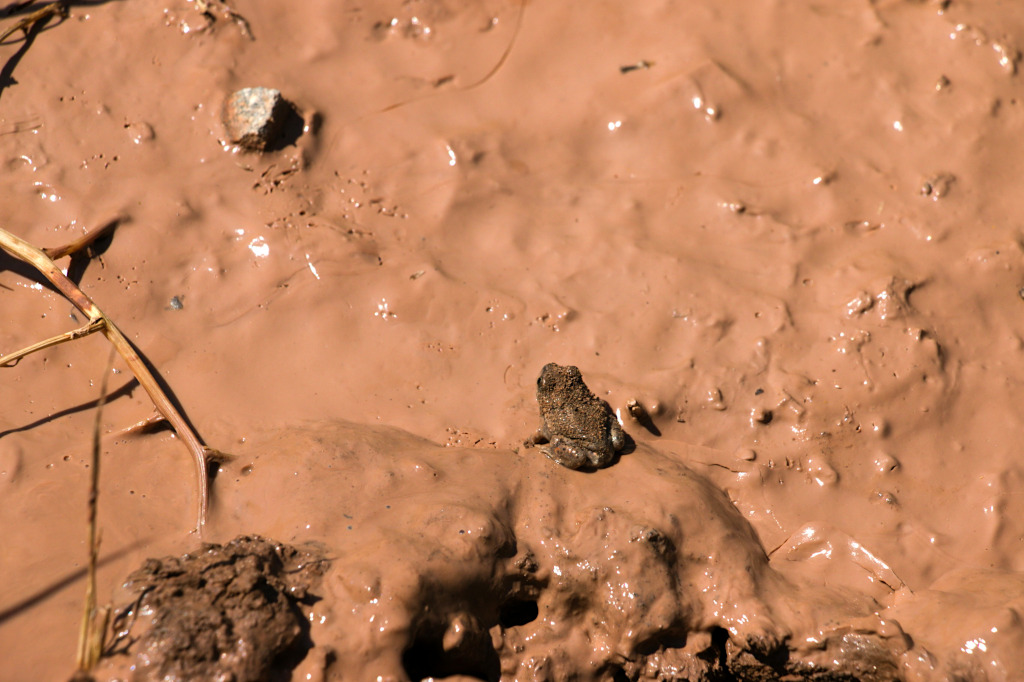 Mexcan Spadefoot Toad metamorph in the mud at the edge of the pool. He’s perched on a promontory created by mud squishing up from around my boots. I think the little dots in the background mud are tracks from the metamorphic toads.
Mexcan Spadefoot Toad metamorph in the mud at the edge of the pool. He’s perched on a promontory created by mud squishing up from around my boots. I think the little dots in the background mud are tracks from the metamorphic toads.
 Recent Mexican Spadefoot Toad metamorph. This photo gives a feeling for how liquid the mud is. Or, conversely, how thick and muddy the water is.
Recent Mexican Spadefoot Toad metamorph. This photo gives a feeling for how liquid the mud is. Or, conversely, how thick and muddy the water is.
Looking at the mud was fascinating. I could see where the toads had been hopping around, where insects had landed, even where a mouse had begun to sink into the mud.
 Mouse tracks in the mud next to the Spadefoot pool. The mud is so soft that mice sink into it.
Mouse tracks in the mud next to the Spadefoot pool. The mud is so soft that mice sink into it.
When I finally got to the water, I found a few more Toads, and a a lot of tadpoles.
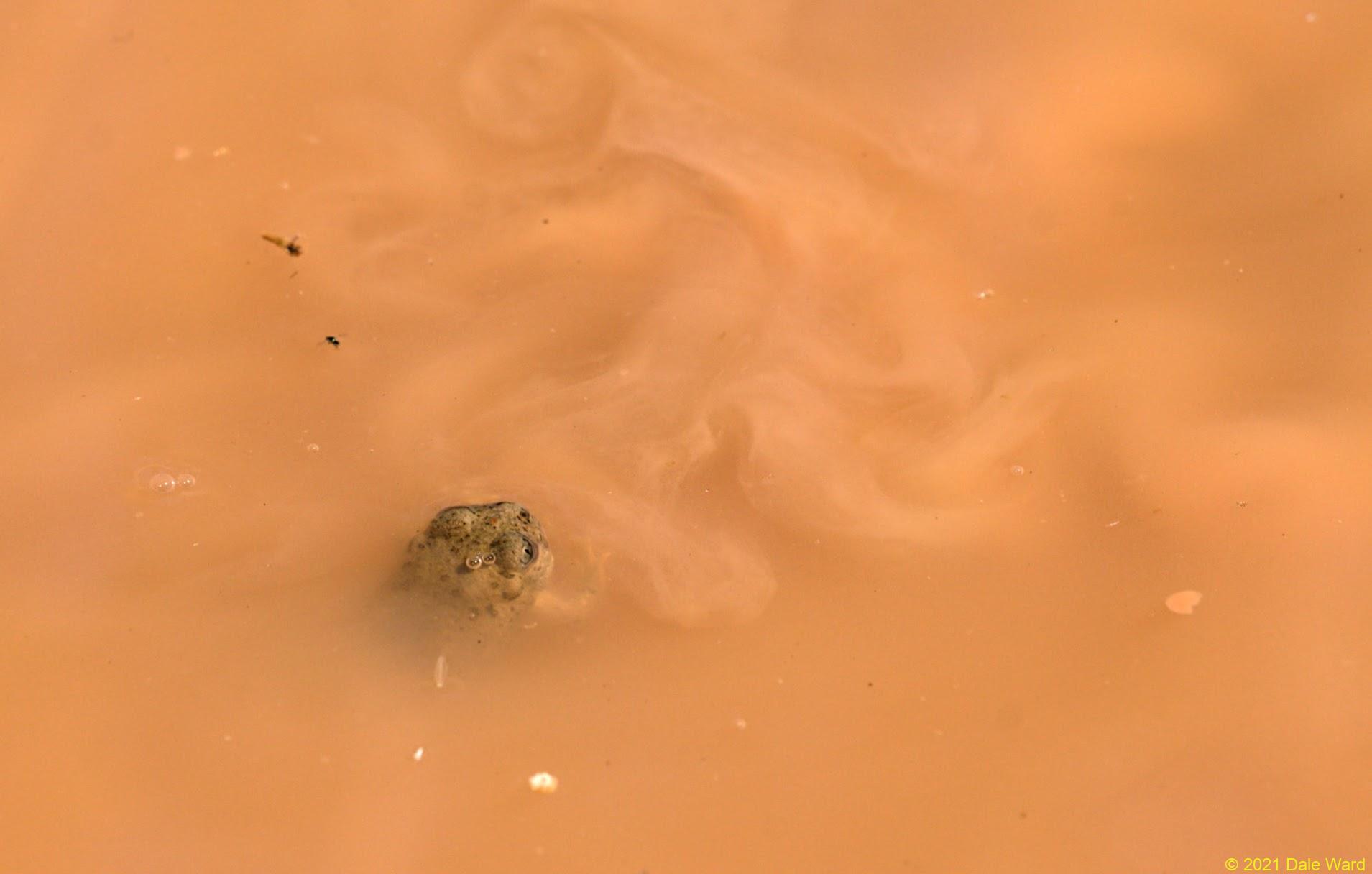 Recently Metamorphosed Mexican Spadefoot Toad just below the surface of the water.
Recently Metamorphosed Mexican Spadefoot Toad just below the surface of the water.
I think the tadpoles were mostly the “omnivore” morph - they were large and round. They were skimming along at the surface with their mouths open. I don’t think they were doing this to breath more easily. I did not notice many bubbles etc as they swam along, which I would expect if they were drawing air into their lungs. Rather, I think they were feeding - eating particles of food that were stuck at the air/water interface.
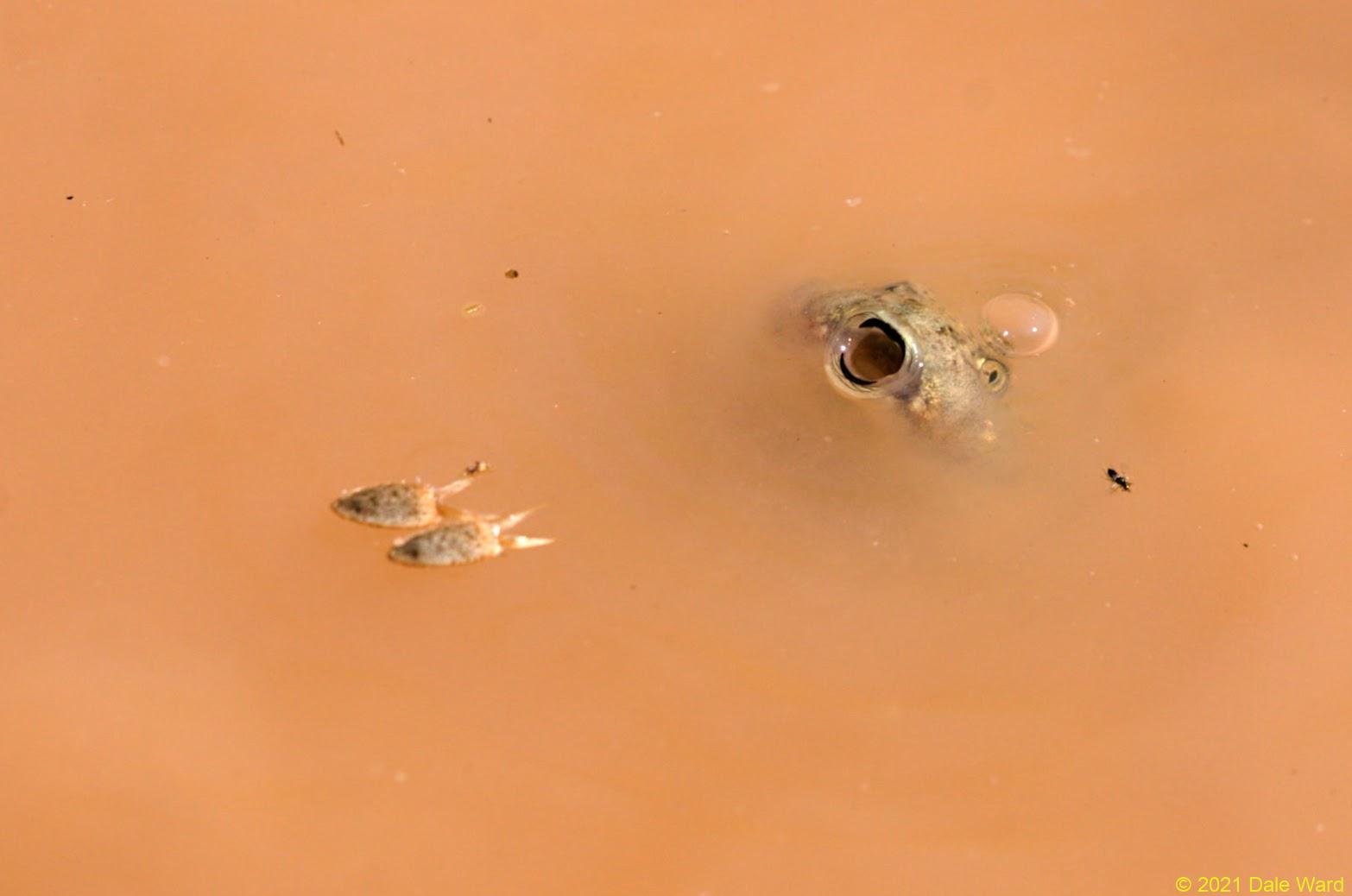 Mexican Spadefoot Toad tadpole skimming along the surface. I think the seeds on the right hand side of the photo are from the Sunflower plants that were growing around the pool.
Mexican Spadefoot Toad tadpole skimming along the surface. I think the seeds on the right hand side of the photo are from the Sunflower plants that were growing around the pool.
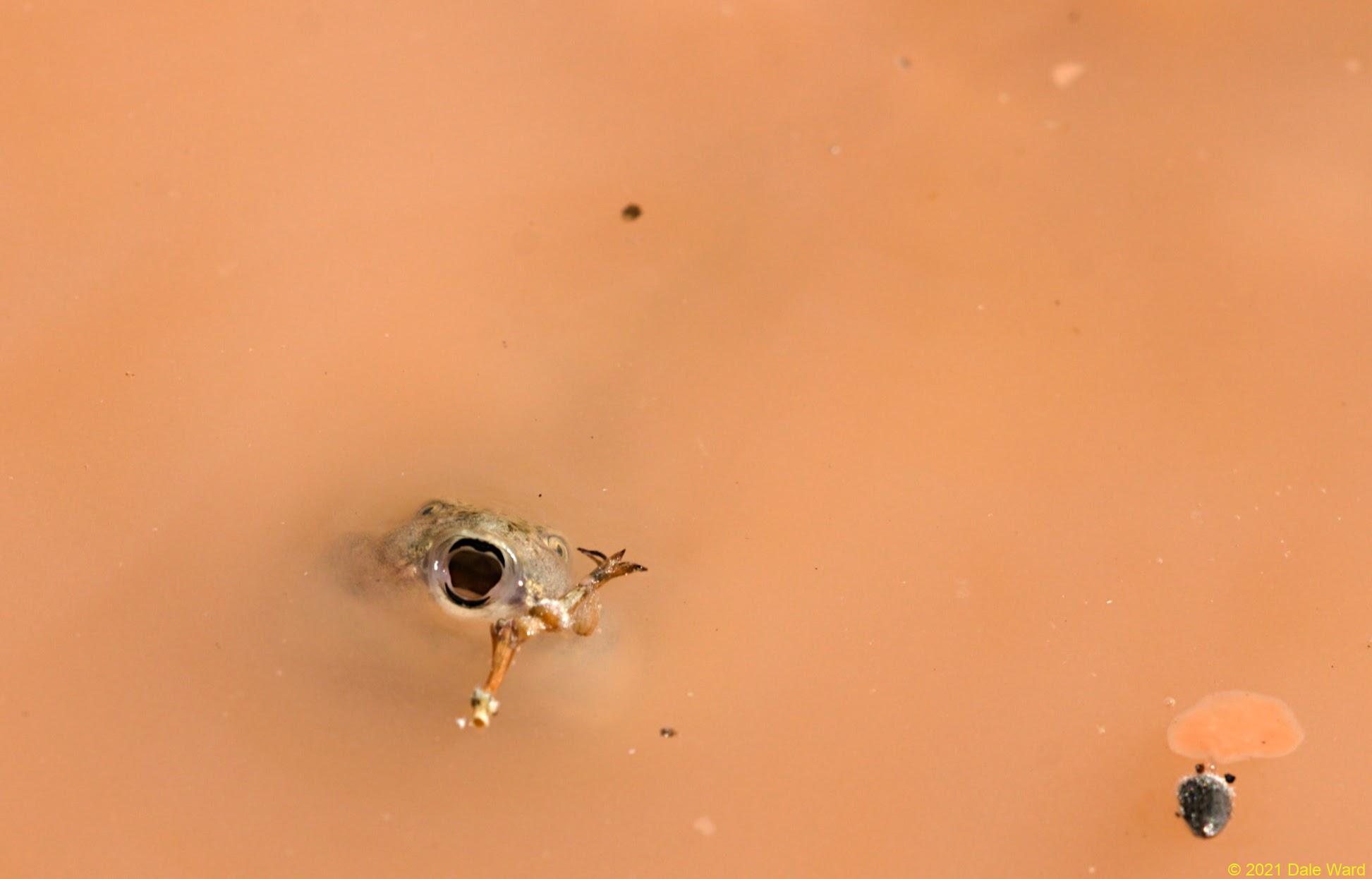 Mexican Spadefoot Toad tadpole skimming along the surface. It’s possible that this surface skimming was in response to low oxygen levels in the pond, but I had been seeing this “spyhop” type behavior all year .
Mexican Spadefoot Toad tadpole skimming along the surface. It’s possible that this surface skimming was in response to low oxygen levels in the pond, but I had been seeing this “spyhop” type behavior all year .
When I returned four days later, on September 12, I saw noticeably fewer small metamorph toads hopping about. There were some, but not nearly as many as there had been four days previously.
The water in the pool had shrunk considerably, and was now so turbid that its consistency was closer to pottery slip than to water. When I scooped the tadpoles out, my hands would be coated with a slippery layer of clay/mud.
I’ve got to say, though, this was my favorite visit to the pool. Nearly all of the tadpoles were well on their way to their metamorphosis, so their forms were a wonderful mixture of tadpole-and-toad.
 Large Mexican Spadefoot Toad with legs, in the palm of my hand.
Large Mexican Spadefoot Toad with legs, in the palm of my hand.
Holding these creatures in my hands was like holding medieval gargoyles made flesh. Both their previous forms and their future forms were mixed together in these strange half-and-half creatures. They were not just “amphibians” as I thought of them - living in two worlds, water and earth.
Rather they were a sort of “meta-amphibian” - creatures living in two realities, part fish-like and part toad-like.
I’m not describing this very well, but they were quite remarkable creatures.
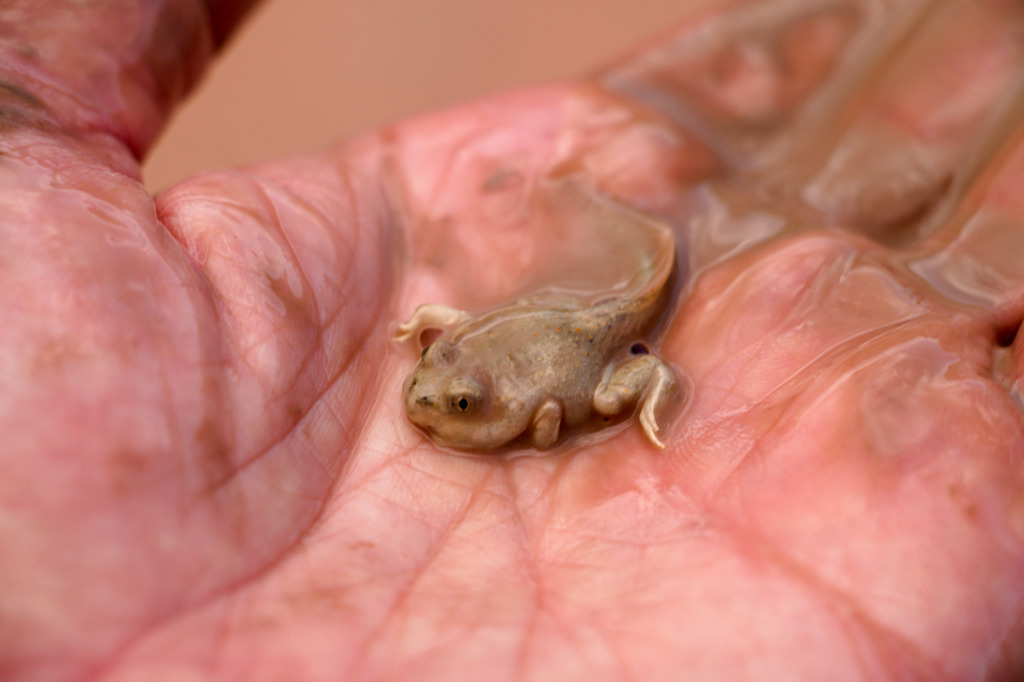 Large Mexican Spadefoot Toad with legs, in the palm of my hand.
Large Mexican Spadefoot Toad with legs, in the palm of my hand.
The viscous coating of mud on them and my hands added to the strangeness. The inter-morph toads were like newborns, still slippery with the clay afterbirth of their mud-puddle womb. Squirming helplessly, wondering what new world they found themselves in.
Okay. This prose is getting a little too purple even for me. I shall endeavor to tone it down.
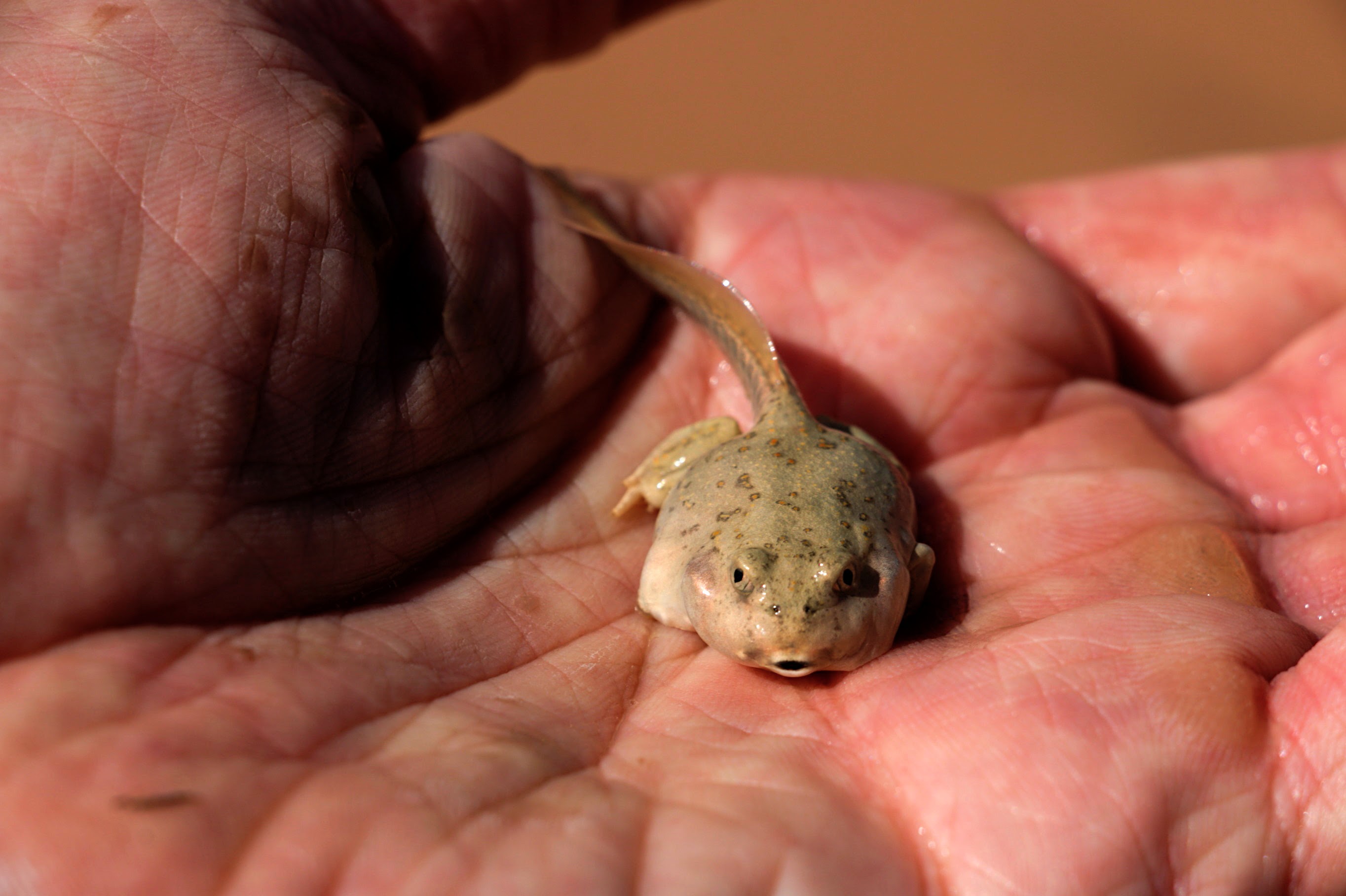 Large Spadefoot Toad tadpole in my palm.
Large Spadefoot Toad tadpole in my palm.
Every now and then, I’d catch a tadpole that was oh-so-close to metamorphosing. It would look like a ready-to-go toad, with bulging eyes, well developed legs, even appropriate skin markings.
But it would have a small tail all coiled up, like a habit that it wasn’t quite ready to give up.
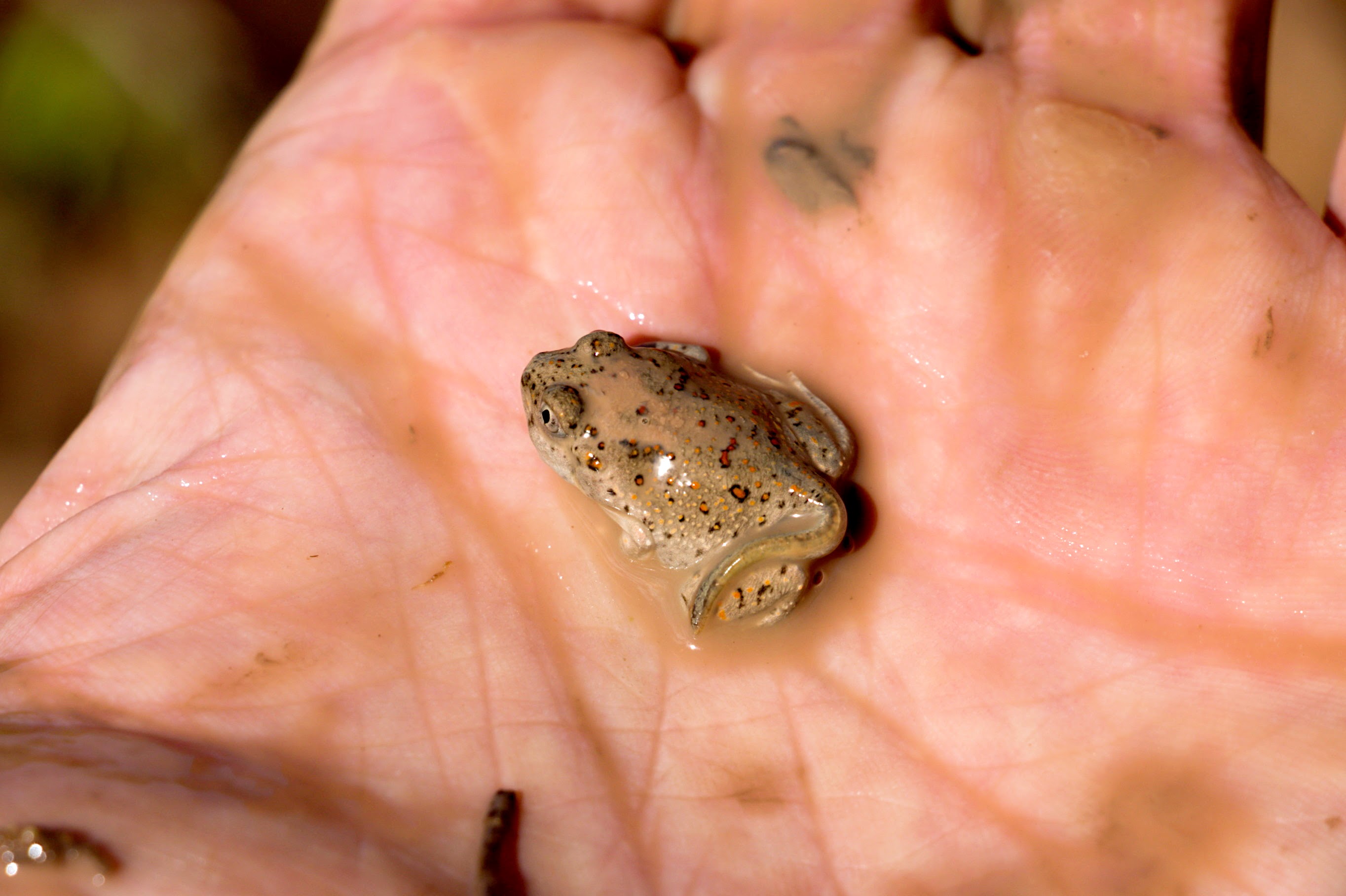 A Mexican Spadefoot Toad that is nearly ready to metamorphose. He looks just like a ‘normal’ toad at this point, but he’s still got a tail.
A Mexican Spadefoot Toad that is nearly ready to metamorphose. He looks just like a ‘normal’ toad at this point, but he’s still got a tail.
When I came back and revisited the pond three days later, on September 15th, all of the water was gone. All that remained was thick mud.
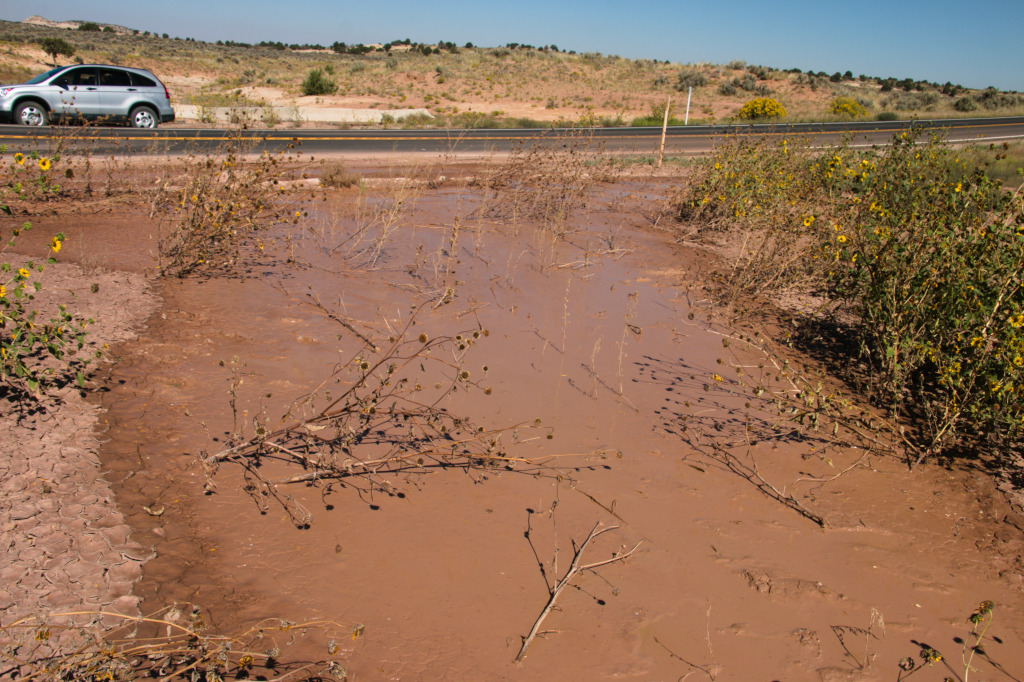 The pool on September 15th. The water is all gone at this point, the pool is comprised entirely of thick mud. There were still a couple of tadpoles in an isolated pool a hundred yards or so upstream, but I saw no trace of tadpoles or Toads at this pool.
The pool on September 15th. The water is all gone at this point, the pool is comprised entirely of thick mud. There were still a couple of tadpoles in an isolated pool a hundred yards or so upstream, but I saw no trace of tadpoles or Toads at this pool.
I saw no trace of tadpoles or toads at the pool on this trip. I was able to locate a couple of tadpoles in an isolated pool a hundred or so yards upstream from here, but that was all.
To go from such a seething community of amphibian life to nearly bare of in a week…it’s astonishing to me.
Can you imagine the metabolic firestorm that must be going on in these creatures, to grow and change that fast?